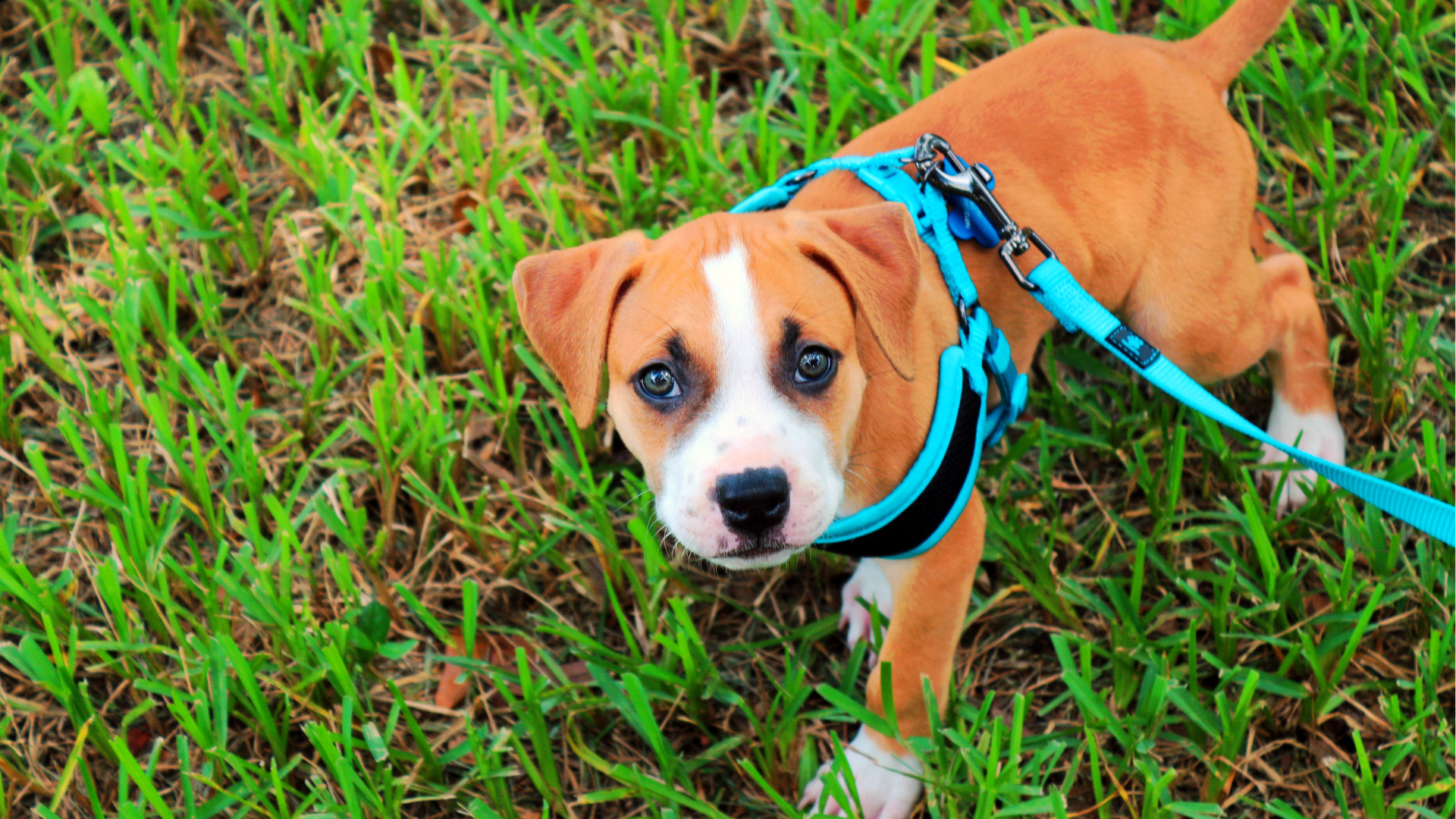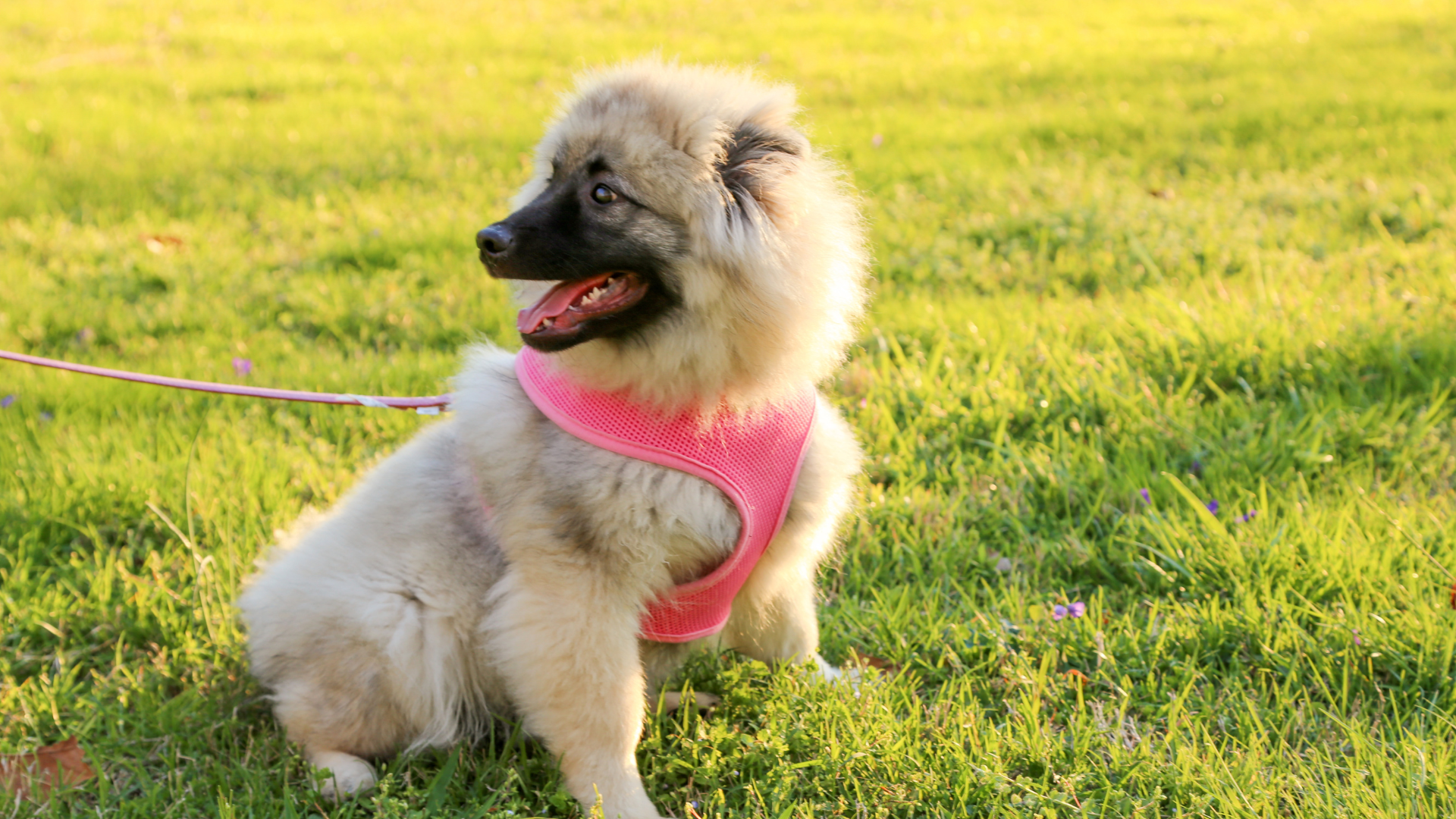
If you’re preparing your new dog for their first walk, you might be wondering how to positively get a harness on puppy. As a certified animal behaviorist, I know how important it is to start your puppy off on the right paw when it comes to any new experiences - from training, daily routines, new friends, and - in this case - new equipment.
Before you take your dog out into the world, once they’re old enough to explore your neighborhood, it’s important to master putting on their harness. The harness will keep your dog safe and secure on walks, as well as hopefully being a much more comfortable alternative to a collar once they’ve got used to it.
Doing anything that requires stillness with a puppy can be tricky. They’re naturally wriggly, curious, playful, and when overwhelmed, a little nippy!
It’s not just about strapping on the best dog harness - it’s about building positive associations and making sure the fit is just right for your growing pup. In this guide, I’ll walk you through a step-by-step process to help you and your puppy feel confident and calm during this important part of your walking preparation.
How to put a harness on a puppy
To ensure a positive experience for all, I’ve put together a step-by-step guide for you to follow alongside your dog to get the best outcome together.
Choose your harness wisely
Your puppy is likely going to grow quite quickly, so while you won’t want to spend a fortune on a harness they might grow out of in a few weeks, make sure you’re still looking for the most comfortable option. A ‘Y-shaped’ harness where the neck joins the tummy piece with a strap down the middle of the chest is the best option to go for.
Avoid any harnesses where the front piece goes across the shoulders and chest, limiting your puppy's movements on walks. It’s also worth finding a brand that has multiple adjustment points. This means you can put your dog’s harness on without having to slide it over their head, and adjust it as your dog grows. Read up on how to measure a dog for a harness or seek the help of a local pet store for guidance.
Create a positive association with the harness
Many dogs run away at the sight of their harness and this is usually a sign that they’re not comfortable with how it’s being put on. If you rush the process with your young puppy, you could set them up for a lifetime of ‘harness hating’ so start slowing and build up a positive association with the harness. Let’s dive into the process of how to put a dog harness on but remember to take this slow. Take a week or so over the following stages, while you’re waiting for your puppy to be old enough to head out for walks.
1. Show your dog the harness and feed them the best dog treat. This is as simple as lifting the harness up in front of them and tossing a treat for them to chase. You can also try placing the harness on the floor and scatter treats around it for them to sniff out and enjoy.
2. If your harness has multiple adjustment points with clips, then you may be able to take just the back piece off to use on your dog’s body. Place this piece on your puppy’s back (or just lay the whole harness across if you can’t take it apart) and feed your dog a few treats. Build up the time it can sit on your dog’s back slowly.
3. Clip and unclip the straps while playing with your dog or feeding them a yummy bit of food on a lick mat or snufflemat. This allows them to get used to the sound of those clips clicking together.
4. Finally, try placing the whole harness on your puppy and doing up the straps. It’s best to do this while you are at your dog’s level rather than looming over them standing up. Ask your pup to hop up onto a sofa or step if they’re able. You could also place them gently onto a raised and non-slippery surface. Kneel down to their level and scatter a few treats on the floor for them to enjoy while you pop the harness onto their body.

5. Play a quick little game or flick some treats around for your dog to chase while they’re wearing the harness to encourage movement in it and to distract them from the new sensation of wearing it.
6. Remove the harness after a minute or two. Keep these early harness-wearing sessions short and sweet to avoid overwhelm.
7. When you first head out for a walk with your dog in their harness, let them take their time. Encourage movement forward by scattering treats on the floor. Avoid any dragging on the lead and if they appear overwhelmed at any time, then start your journey home. Remember that puppy walks need to be kept short not only due to physical stress on the body but also due to all the stimulation they will experience which can cause them to feel emotionally stressed.
Should you put a harness on a puppy?
You might question whether a harness is the right choice for your puppy. As a behaviorist working with dogs for over a decade, I will always advocate for a puppy to be walking on a harness as opposed to a collar. A harness - when fitted correctly - is going to allow your dog to move naturally, to express their body language more easily, and will spread out any pressure that may occur should they pull on the leash.
It is important to consider some safety aspects. You might, for example, wonder is it safe to leave a harness on a dog all the time? And that definitely is one aspect of harness safety we need to address.
A puppy should only wear their harness when walking outside of your home. Indoors, remove their harness on return from a walk to ensure they’re both comfortable and able to rest well, but also that they can’t get caught on anything within your home. If your puppy is likely to play boisterously with other dogs on walks, then it’s also advisable to remove their harness during play sessions. Keep a collar on them with their ID tag showing, but remove the harness that could get limbs caught in during playtime.

Which harnesses are best for puppies?
There are many types of dog harnesses and not all are equal in both quality or suitability for walking your puppy. While your dog is small, you don’t want to have anything too bulky on their bodies. A simple fleece-lined harness is a good choice. Opt for a harness that has a Y=-shape at the front, instead of one that goes across the shoulder which could impact movement.
A harness that has two D-ring areas for connecting a double-ended training lead can provide you with options for control in the future, but it’s best to avoid attaching the lead to your dog’s chest all the time as this can mean they’re constantly turning their body to the side while walking.
As a new puppy parent, you might be wondering why your dog hates their harness - well we have all the answers! We can also help you explore in more detail how to use a harness on a dog to help you get this important leash-walking skill right.







